- Home
- Features
- Movies/Media
- Collectibles
- Comics/Books
-
Databases
-
Figure Database
>
-
X-Plus Toho/Daiei/Other
>
- X-Plus 30 cm Godzilla/Toho Part One
- X-Plus 30 cm Godzilla/Toho Part Two
- X-Plus Large Monster Series Godzilla/Toho Part One
- X-Plus Large Monster Series Godzilla/Toho Part Two
- X-Plus Godzilla/Toho Pre-2007
- X-Plus Godzilla/Toho Gigantic Series
- X-Plus Daiei/Pacific Rim/Other
- X-Plus Daiei/Other Pre-2009
- X-Plus Toho/Daiei DefoReal/More Part One
- X-Plus Toho/Daiei DefoReal/More Part Two
- X-Plus Godzilla/Toho Other Figure Lines
- X-Plus Classic Creatures & More
- Star Ace/X-Plus Classic Creatures & More
-
X-Plus Ultraman
>
- X-Plus Ultraman Pre-2012 Part One
- X-Plus Ultraman Pre-2012 Part Two
- X-Plus Ultraman 2012 - 2013
- X-Plus Ultraman 2014 - 2015
- X-Plus Ultraman 2016 - 2017
- X-Plus Ultraman 2018 - 2019
- X-Plus Ultraman 2020 - 2021
- X-Plus Ultraman 2022 - 2023
- X-Plus Ultraman Gigantics/DefoReals
- X-Plus Ultraman RMC
- X-Plus Ultraman RMC Plus
- X-Plus Ultraman Other Figure Lines
- X-Plus Tokusatsu
- Bandai/Tamashii >
- Banpresto
- NECA >
- Medicom Toys >
- Kaiyodo/Revoltech
- Diamond Select Toys
- Funko/Jakks/Others
- Playmates Toys
- Art Spirits
- Mezco Toyz
-
X-Plus Toho/Daiei/Other
>
- Movie Database >
- Comic/Book Database >
-
Figure Database
>
- Marketplace
- Kaiju Addicts
|
Baragon (バラゴン) is a fictional Kaiju (Japanese giant monster) that was first featured in the 1965 Toho-produced film, Frankenstein Conquers the World. Baragon is a four-legged dinosaur with a horn on his head and large ears. His main weapon is a heat ray that he can fire from his mouth. In addition, he can jump very high and burrow through the ground. Origin Showa series (1965) Frankenstein Conquers the World: Baragon was a dinosaur who burrowed underground to escape the extinction of the other dinosaurs and other prehistoric creatures died out. He adapted to and lived successfully. But when the sounds of a nearby factory disturbed and awakened Baragon, he emerged from the underground and attacked it. He appeared later at Shirane and destroyed the village. Then he emerged at a farm, where he ate the livestock - with feathers flying out of his mouth. During these attacks, Baragon was not seen, so the mutant human Frankenstein was blamed. But there was a person who survived the destruction of the factory who claimed there was a second monster that had attacked the factory. When a small group of scientists searched for Frankenstein, an explosive awoke Baragon from his sleep. He emerged to attack the scientists, but Frankenstein appeared to protect them from Baragon. The two fought a climactic battle, but Frankenstein ultimately defeated Baragon by choking him and breaking his neck. But in the end, a fissure appeared beneath the two and swallowed them up into the Earth (1968) Destroy All Monsters: Baragon is seen as one of several monsters kept in captivity on Monster Island. Along with the rest of Earth's monsters, he is brought under the control of an alien race called the Kilaaks during their invasion of Earth and forced to destroy cities in their cause. It is unknown if this was the same Baragon that battled Frankenstein or another. The latter theory is supported by the fact this Baragon was smaller than the original. The 1965 version of Baragon stands 25 meters (82 feet) in height, the 1968 version stands up to 57 meters (or 190 ft) in height. He later breaks free from this mind control, and watches (but does not actually take part in) the fight against the Kilaaks and their remaining monster, King Ghidorah before returning to Monster Island with the other Earth monsters. Use of suit Of all the monsters in the Toho fame, the Baragon suit was borrowed and used the most by Tsuburaya Productions, the company made famous for its work on the TV show Ultraman. The Baragon suit was reused several times to create the monsters in the series: Neronga, Gabora, and Magular, as well as Pagos from Ultra Q. Notably, Haruo Nakajima (the Godzilla suit actor as well as suit actor for Baragon in his initial debut) also played the suit actor for these monsters (with the exception of Magular.) In Destroy All Monsters, Baragon was supposed to attack Paris for the film, using his burrowing ability to smash the Arc de Triomphe from below. Unfortunately, the Baragon suit was unavailable due to the fact it was on loan for work on Ultraman. Baragon was replaced with Gorosaurus for this scene, but was still blamed for the attack. Gorosaurus was also given Baragon's special burrowing ability and even his signature roar to further confuse viewers. Baragon was also supposed to be used as a guard for the Kilaak base, but he was not shown on screen while doing this, possibly for the same reason above. Baragon's other appearance was supposed to be Godzilla vs Mechagodzilla. He was supposed to fight Mechagodzilla in the scene after he smashed that building, but instead they replaced him with Anguirus.  Millennium series In the Millennium series, Baragon reappeared in the 2001 film, Godzilla, Mothra and King Ghidorah: Giant Monsters All-Out Attack as one of three ancient guardian monsters. The other two are Mothra and King Ghidorah (originally Varan and Anguirus). When Godzilla is revived by the souls of the people who died in World War II, Baragon, Mothra, and King Ghidorah were summoned to protect the nation from the threat. Baragon was the first of the three guardians to confront Godzilla and was eventually killed by the monster's atomic breath. Baragon does not have a heat ray or a glowing horn, but he still has his burrowing and extraordinary jumping abilities. In Godzilla Final Wars, Stock footage of Baragon from Frankenstein Conquers the World was seen during the opening claiming that Baragon was one of many monsters that arose due to the devastation that the World Wars brought, along with Varan, Gezora, Gaira, Titanosaurus, and Megaguirus. Film Appearances
Frankenstein Conquers the World Destroy All Monsters Godzilla, Mothra and King Ghidorah: Giant Monsters All-Out Attack Godzilla: Final Wars
1 Comment
Yongary or Yonggary (대괴수 용가리 - Taekoesu Yongary lit. Great Monster Yongary), also known as Yongary, Monster from the Deep, is a 1967 South Korean Kaiju film directed by prominent genre-film director Kim Ki-duk (no relation to the art film director Kim Ki-duk). In 1999, a reimagining of the film was produced, released in Korea simply as Yonggary and released in the United States as Reptilian. Synopsis In the Middle East, a bomb is set off that creates massive earthquakes. Meanwhile in South Korea, a young couple is about to get married and the tension builds when South Korea sends a manned space capsule to investigate the bomb site. The earthquake makes its way to South Korea, caused by a giant monster named Yongary (inspired by a mythical creature in Korean lore). Yongary attacks Seoul and makes his way to the oil refineries where he consumes the oil. A child related to the aforementioned couple turns off the refineries' oil basins; Yonggary, enraged, starts attacking until a chemical explosion at the refinery proves to have an effect on it. The Korean Government then uses oil to draw Yonggary to a local river, and kills it with a refined version of the ammonia compound. Remake The film was remade in 1999 by Shim Hyung-rae. To date, the Yonggary remake is the most expensive Korean film ever produced. The film was a moderate success and due to its success, a 2001 Upgrade Edition was produced a few months after its initial release. This version was slightly different from the original 1999 cut. The 2001 Upgrade featured new additional scenes, a new soundtrack by Chris Desmond, and new effects. 60% of the original 1999 cut made it to the 2001 upgrade version. It first premiered at a Japanese film festival in 2000 and then had its worldwide release in January 2001, which flopped due to poor promotion. The original 1999 cut was never released on VHS or DVD and the only version of the film available is the 2001 upgrade edition, which is now known as Reptilian. It's been debated whether prints of the original 1999 cut had been destroyed by the studio when at the time they believed that the 2001 upgrade edition would be a box office success.The 1999 cut was a proper remake of the first film, where Yonggary dies at the end, and the aliens were not in it. Trivia
In South Korea, Reptilian was very unpopular, and no DVDs were sold. In the USA and Japan, they can be purchased online and at some stores. However, it aired a couple of times on SciFi Channel. The new design of Yonggary is completely different from the original. He is taller, has three horns on his head, and has a jewel on his forehead called the Damon. The Damon was placed there by the aliens, so that they can control Yonggary and use him to destroy planet Earth. When the Damon was destroyed, they lost all control over Yonggary, and Yonggary turned good and helped mankind defeat the aliens. The original Yonggary had flamethrower breath and could shoot a laser beam from the horn on his snout, but the new Yonggary shoots fireballs from his mouth and has powers he has yet to discover(according to the aliens at the end of the film). The original Yonggary bears a striking resemblance to Barugon from the Gamera series, as well as Godzilla, whom of which inspired Hyung Rae to create Yonggary. In the original film, Yonggary is shown to have a diet of oil. However, in the remake, he is not shown eating (or drinking) anything. Although the original version of the beast was closer in appearence to Godzilla, the remade version fought another monster, which is featured in most Godzilla films. Another similarity, the original kaiju was meant to terrorize the people of Korea, much like the original Godzilla destroyed Japan. Also, in the US version of the remake he is a savior to mankind, like Godzilla is in countless movies. The origin of the new Yonggary is unknown; the original was burrowing underground, but the new monster is just a skeleton at the beginning and is resurrected by the aliens. Yonggary means Huge Dragon in Korean. One of the possible reasons for Yonggary's redesign in the remake might be people criticized the monster for looking like Godzilla. Another reason might be the remake was inspired by the American Godzilla remake, and Godzilla's design for the movie changed the monster completely. This could be the case, as it has many similarities to the American Godzilla remake, such as a Western cast. Also, the American Godzilla ends with the camera going into the surviving baby's mouth, and Reptilian ends with the camera going into Yonggary's mouth. There was an alternate ending for Reptilian that was exclusive to the original Korean release; Yonggary never turns good and is eventually killed by mankind, and never fights Cykor. Gorgo is a 1961 British Giant monster movie. Directed by Eugène Lourié, it tells the story of an underwater monster's capture off the coast of Ireland. The monster is taken to London to be featured as a circus attraction. The film borrows elements from other monster movies, such as Godzilla and King Kong. Production The film was originally set to take place in Japan; this was then changed to France, and then finally changed to the UK. According to Bill Warren's film book Keep Watching the Skies, Australia was also considered for a locale, but the producers supposedly decided that audiences "wouldn't care" if a monster attacked Australia; Australia's alleged lack of worldwide recognizable landmarks for Gorgo to destroy was also cited as a consideration. The location where Gorgo first appears, the fictional Nara Island, is likely a tribute to the Godzilla series; Nara being a historical period of Japan: alternatively, it may be an anagram for the Aran Islands, off Ireland's west coast. The exterior scenes set in Ireland were filmed at Bulloch Harbour and Coliemore Harbour, both near the County Dublin town of Dalkey. Other scenes were filmed at the MGM-British Studios in Borehamwood in Hertfordshire. Scenes where Gorgo is driven through the streets of London were shot on a Sunday morning when there was no traffic. The film studio wanted Gorgo to fight the military despite director Eugène Lourié's objections. Later, Lourié would acquire a print of the film and remove the footage. Gorgo's special effects were achieved by suitmation and miniaturization, a technique pioneered in the Godzilla films. The younger Gorgo was smaller than usual giant monsters so the sets around him were built to a larger scale leading to a greater sense of realism and believability. The creatures were also shot with then-pricey slow-motion cameras to create a sense of scale. The effects were complex and are well respected by special effects artists and fans. The film is also sometimes praised for its innovative ending, which seems to have an environmentalist moral. Unusually for such films, the monsters, which are presented as innocent victims of human interference, survive and prevail. Novel and comic
A novelization of the film was released in paperback at the time of its original release (Gorgo by Carson Bingham (Monarch, 1960)). From 1961 to 1965 Charlton Comics published 23 issues of the comic Gorgo. It included work by Spider-Man co-creator Steve Ditko. The series was renamed Fantastic Giants with issue #24 which turned out to be the last issue of the series. Gorgo also appeared in a three issue mini-series that started off as Gorgo's Revenge, before it was renamed The Return of Gorgo with issue #2. The series ran from 1962-1964. Some of these issues were reprinted (in black and white) in a trade paperback in 2011 called Angry Apes n' Leapin Lizards. Gigan (ガイガン Gaigan) is a kaiju (Japanese giant monster) from the Godzilla series, introduced in the 1972 film Godzilla vs. Gigan. Gigan is an organic/cybernetic monster sporting a buzzsaw weapon in its frontal abdominal region and large metallic hooks for hands. Gigan is considered Godzilla's most brutal and violent opponent, alongside Destroyah, both of which were easily able to severely injure Godzilla. Gigan was also the first monster in the Toho sci-fi series to cause Godzilla to visibly bleed. Appearances Gigan's first appearance was in the 1972 film Godzilla vs. Gigan. In the film, Gigan is summoned to Earth by the antagonist Nebula M Space Hunter aliens where he was paired with the three-headed space dragon King Ghidorah to destroy Tokyo. They were challenged by Godzilla and Anguirus, and after a long fight the two space monsters were driven away. In the 1973 film, Godzilla vs. Megalon, Gigan was sent by the antagonist Nebulans to assist the people of Seatopia in their assault on humanity by aiding their god, Megalon, in a battle against Godzilla and the robot Jet Jaguar. After receiving a broken arm at the hands of Jet Jaguar, Gigan fled to space, leaving his erstwhile ally Megalon to face Godzilla and Jet Jaguar alone. This is the second time Gigan has abandoned an ally. This seems to indicate that Gigan has a traitorous or cowardly personality. Also in 1973, Gigan made an appearance on Toho's television series Zone Fighter. After his battle with Godzilla and Jet Jaguar, Gigan was captured in space by the Garoga army and sent back to earth to prevent Godzilla from rescuing Zone Fighter, but he is soundly defeated by him. Left for dead, Godzilla leaves believing he is victorious, but Gigan revives shortly afterwards and battles Zone Fighter himself. In the final battle, Gigan is seemingly killed by Zone Fighter. It was made official by Toho that this indeed happened in the Showa Godzilla universe. Gigan's latest appearance was in the 2004 Millennium film, Godzilla: Final Wars, where he is one of the main antagonists for Godzilla to fight. Long ago, Gigan once fought Mothra for the fate of the Earth and ultimately was defeated by Mothra. Years later his sarcophagus is discovered and analyzed by the human, but is suddenly revealed to be a weapon used by the Xiliens too. Gigan awakens and causes havoc and destruction in Japan, but is then sent to destroy the Gotengo in hopes of not awakening Godzilla. Although Gigan does manage to bring down the Gotengo (temporarily,) Gigan then faces off against Godzilla and is seemingly killed when Godzilla blows his head off with his Atomic Ray. During the climactic battle between Godzilla and Monster X, Mothra arrives to assist Godzilla but is intercepted by a revived Gigan, whose arms have been retrofitted with enormous chainsaws in place of his iconic blades. Mothra and Gigan resume their ancient rivalry and after a long battle that briefly interrupts Godzilla and Monster X's battle, Gigan is killed by a kamikaze attack from the flaming, grievously wounded Mothra. Powers and Abilities Hooked arms: Gigan possesses razor-sharp hooked blades in place of hands which the monster uses to both batter and stab his opponents. In his appearance on the television series Zone Fighter, the tips of the hooks can release an explosive charge on contact with an enemy. In Godzilla: Final Wars, Gigan's arms were replaced with chainsaws after being defeated by Godzilla. Antigravity flight: Gigan has a trio of retractable wings which is capable of allowing Gigan to fly at speeds of up to Mach 3. This normally assists in interstellar travel and is utilized very little, if at all, during battle situations. When it is used in battle, however, Gigan will often use it to engage in aerial slams to continuously topple his opponents without giving them a chance to counter, or even get up. In Godzilla: Final Wars, the antigravity flight was replaced by jetpacks, presumably to give Gigan more of a robotic feel. Buzzsaw: Gigan has a buzzsaw built into his abdominal area. It is of considerable durability and effectiveness as it was sharp enough to cause severe epidermal damage to Godzilla and Anguirus (being the first weapon shown to breach Godzilla's skin and actually draw blood) and brought down a weakened Gotengo. Grappling cables: In Godzilla: Final Wars, Gigan was able to fire two hooked grappling cables from beneath both of his hand blades which he used to snag onto his opponents and reel them into range of his deadly buzzsaw. Razor discs: In Godzilla: Final Wars, the upgraded Gigan was able to fire two razor sharp disks from just above his buzzsaw. Mothra however dodged them and simultaneously released her reflective powder, which caused them to malfunction and boomerang back towards Gigan who was promptly decapitated the second time in that movie. Eye beam: In Godzilla: Final Wars, Gigan could fire a red beam from his eye that scattered into a shot-gun like blast of energy. This ability, however was never used in the Showa films, possibly due to budgets cuts. In Godzilla vs. Gigan an unexplained blue light sparkles on his forehead only for a split second after a rock hits his forehead. Film Appearances Godzilla vs. Gigan Godzilla vs. Megalon Godzilla: Final Wars Gigan has also appeared in IDW's Godzilla and Godzilla: Gangsters & Goliaths comic book series.
Gyaos (ギャオス Gyaosu), is the name of several daikaiju from Daiei's Gamera film series, introduced in their 1967 production Gamera vs. Gyaos and one of Gamera's most famous opponents. It is the only Gamera foe to appear in the Showa, Heisei, and Millennium Gamera films. This makes Gyaos, arguably Gamera's arch nemesis, though Iyris and Queen Legion may also be likely candidates. Gyaos resembles a giant cross between a pterosaur and a bat, with a flattened, arrow-shaped head, leathery wings with three claws on each, taloned feet, and a fish-like tail. It has dull blue skin in most incarnations. The Gyaos in Gamera: Guardian of the Universe had a more streamlined appearance, with larger wings and a longer neck, as well as red eyes. Appearances Showa Era In Gamera vs. Gyaos, Gyaos appeared in Japan from a large cavern, and feasted on blood (principally that of livestock and human beings). Soon, Gamera confronted Gyaos, and after a battle, Gyaos was forced to flee and Gamera was forced into the ocean to recover. It is soon learned that light from the sun causes Gyaos' tissue to shrivel, so the light of the city stadium of Nagoya kept Gyaos at bay. Gamera soon returned to finish Gyaos off and, after a battle in the air, Gyaos cut off his own foot to escape from the sun. The protagonists developed a plan to place artificial blood on a rooftop in Nagoya. The plan was to keep Gyaos drinking the blood for so long that the sun would come up and kill him. But Gyaos proved more cunning than originally thought and used a strange fog attack to protect himself from the sun. The next plan was to lure Gamera to Gyaos' lair in the forest by setting the forest on fire. Gyaos used his fog attack to put out the flames, but Gamera arrived and eventually defeated Gyaos by throwing the beast into a volcano. Space Gyaos appeared briefly in Gamera vs. Guiron, and quickly finds itself victim of Gamera's titular opponent. In reality, Space Gyaos is simply the Gyaos prop from Gamera vs. Gyaos painted silver. This was done because production crew of the film did not have the time and budget to invest the time of creating another new monster. Stock footage of Gyaos was later featured in the Shōwa series recap Gamera: Super Monster among others. Heisei Era In 1995, Gyaos was revived with Gamera for the first Heisei era Gamera film, Gamera: Guardian of the Universe, which follows a story similar to the one above. In this, the Gyaos were reimagined as creations of the ancient Atlantis civilization designed to control pollution. However, the asexual Gyaos reproduced out of control and destroyed their creators. As a last-ditch defense, they created the Gameras, who eliminated the Gyaos, although not in time to save the Atlanteans. However, clutches of Gyaos eggs survived and one clutch hatched in the modern world. After killing and eating all the inhabitants of Himigami Island and attacking the mainland, the Gyaos were lured to the Fukuoka Dome stadium in Fukuoka. The last Gamera, sensing his ancient foe, awoke as well and made his way to Fukuoka. Gamera attempted to stop the Gyaos, killing two, but was hindered by the misguided military, who considered him to be the greater threat. Eventually Gamera killed the last Gyaos, which had nested in Tokyo and had grown into Super Gyaos. Super Gyaos would also appear in flashback scenes in G3, and would eventually be revealed as the real killer of Ayana's parents. The Gyaos do not appear in G2, but they are mentioned and are the subject of a book. The Gyaos returned in a new, evolved form known as the Hyper Gyaos in G3, after Gamera used his mana cannon to destroy Legion in G2, which drained the Earth's mana, creating the right conditions for more Gyaos to hatch. Early in the film, Gamera battles a pair of Hyper Gyaos in the Shibuya district of Tokyo, killing them but also killing and injuring as many as fifteen to twenty thousand civilians. After Gamera defeated Iris in Kyoto, thousands of Hyper Gyaos swarmed towards Japan, intent on killing Gamera once and for all. Millennium Era The Gyaos make a cameo appearance in the newest Gamera film Gamera the Brave, as Gamera dies while fighting several Gyaos in a small village. This makes them the only monster in the Gamera series apart from Gamera himself to have appeared in the Showa, Heisei and Millennium series in some shape or form. Powers and Abilities In all incarnations the Gyaos have been shown to be astonishingly capable flyers, able to fly incredibly fast and perform agile aerial maneuvers with ease. Also, Gyaos have the ability to fire sonic beams from their mouths that can cut through nearly anything short of Gamera's shell, however, the Showa Gyaos had a weakness in that the double throats it used to create its Sonic Ray limited the mobility of its head and neck. Although they are nocturnal, the Gyaos can overcome the sun: emitting a fog-like gas to obscure the sun and douse flames, while the Heisei version simply evolves into Super Gyaos and grows protective plates over its eyes. While sunlight was merely an annoyance to the Heisei Gyaos, it was a fatal weakness in the Showa Gyaos, as Ultraviolet rays ate away his tissue. Interestingly, the Space Gyaos in Gamera vs. Guiron seems to have no such aversion to sunlight. The Showa version also has a regenerative ability, as it was able to regrow its severed foot after only an hour. The Heisei version showed several evolutions: it was asexual and could reproduce on its own. While not shown to be regenerative, the Super Gyaos is immensely physically tough, able to easily shrug off missile attacks, and even survive orbital re-entry however this isn't surprising as many kaiju have done things similar to these feats. In all eras Gamera and Gyaos are considered archenemies. Film Appearances Gamera vs. Gyaos Gamera vs. Guiron Gamera: Super Monster (Stock Footage) Gamera: Guardian of the Universe Gamera 3: Revenge of Iris Gamera the Brave The Heisei Gyaos also appeared in the short-lived Gamera comic series by Dark Horse Comics. It was the initial foe faced by Gamera, and from whose DNA helped create the Kaiju Viras.
|
Archives
January 2022
Categories
All
|
|
© 2011-2024 Kaiju Battle. All Rights Reserved.
|
Visit Our Social Media Sites
|
Proudly powered by Weebly
|
- Home
- Features
- Movies/Media
- Collectibles
- Comics/Books
-
Databases
-
Figure Database
>
-
X-Plus Toho/Daiei/Other
>
- X-Plus 30 cm Godzilla/Toho Part One
- X-Plus 30 cm Godzilla/Toho Part Two
- X-Plus Large Monster Series Godzilla/Toho Part One
- X-Plus Large Monster Series Godzilla/Toho Part Two
- X-Plus Godzilla/Toho Pre-2007
- X-Plus Godzilla/Toho Gigantic Series
- X-Plus Daiei/Pacific Rim/Other
- X-Plus Daiei/Other Pre-2009
- X-Plus Toho/Daiei DefoReal/More Part One
- X-Plus Toho/Daiei DefoReal/More Part Two
- X-Plus Godzilla/Toho Other Figure Lines
- X-Plus Classic Creatures & More
- Star Ace/X-Plus Classic Creatures & More
-
X-Plus Ultraman
>
- X-Plus Ultraman Pre-2012 Part One
- X-Plus Ultraman Pre-2012 Part Two
- X-Plus Ultraman 2012 - 2013
- X-Plus Ultraman 2014 - 2015
- X-Plus Ultraman 2016 - 2017
- X-Plus Ultraman 2018 - 2019
- X-Plus Ultraman 2020 - 2021
- X-Plus Ultraman 2022 - 2023
- X-Plus Ultraman Gigantics/DefoReals
- X-Plus Ultraman RMC
- X-Plus Ultraman RMC Plus
- X-Plus Ultraman Other Figure Lines
- X-Plus Tokusatsu
- Bandai/Tamashii >
- Banpresto
- NECA >
- Medicom Toys >
- Kaiyodo/Revoltech
- Diamond Select Toys
- Funko/Jakks/Others
- Playmates Toys
- Art Spirits
- Mezco Toyz
-
X-Plus Toho/Daiei/Other
>
- Movie Database >
- Comic/Book Database >
-
Figure Database
>
- Marketplace
- Kaiju Addicts

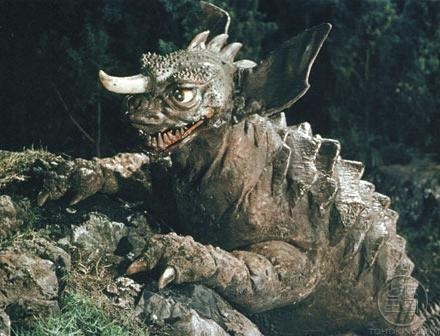


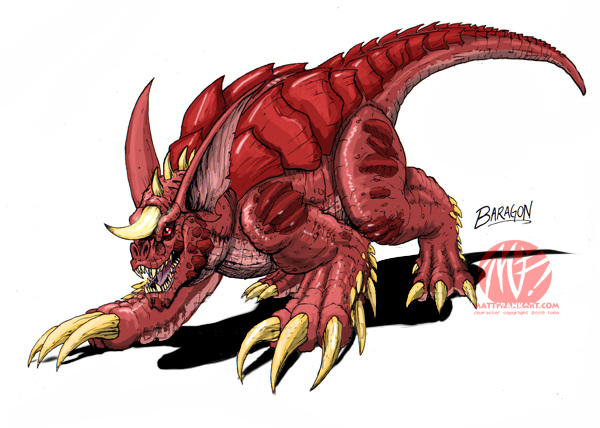


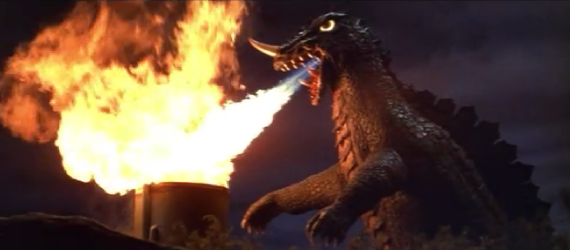








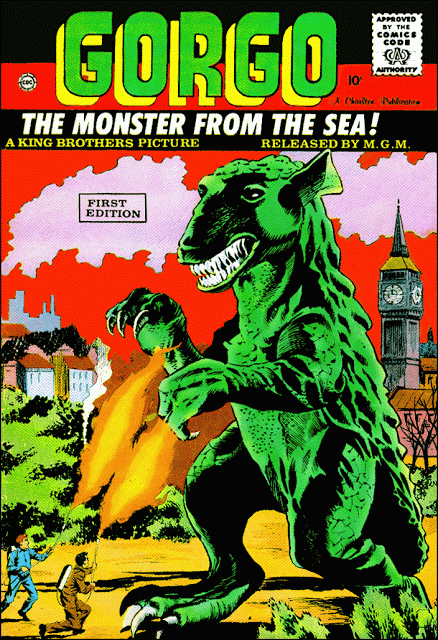


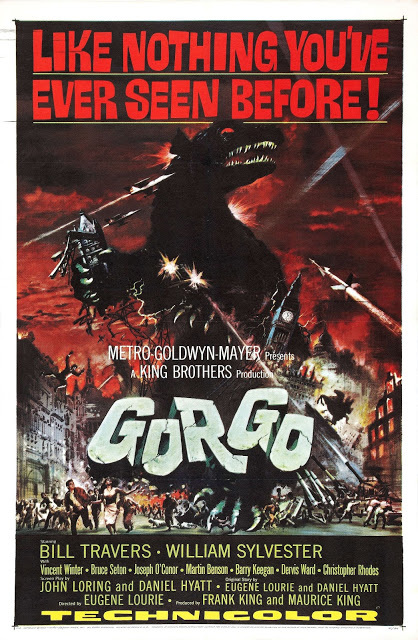
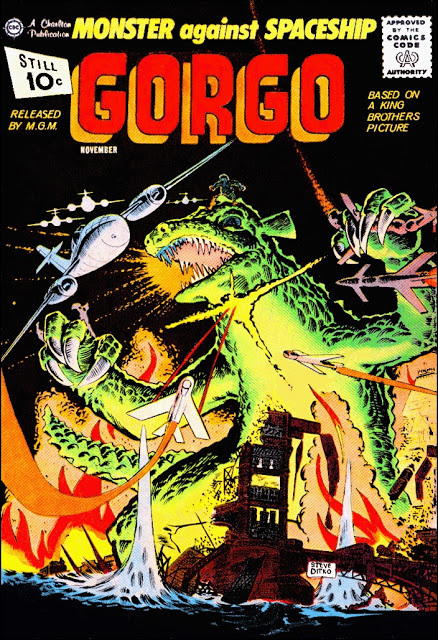

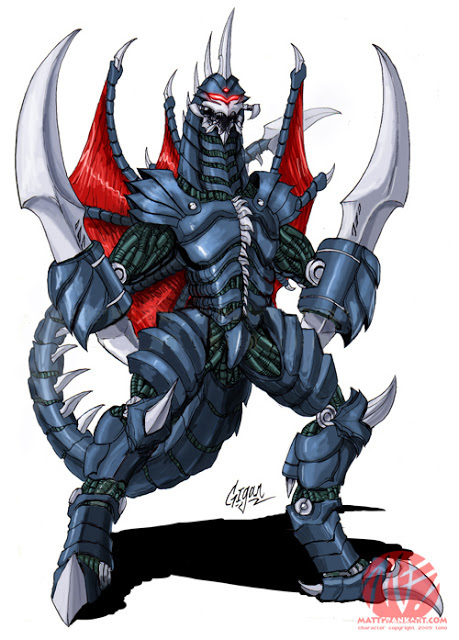












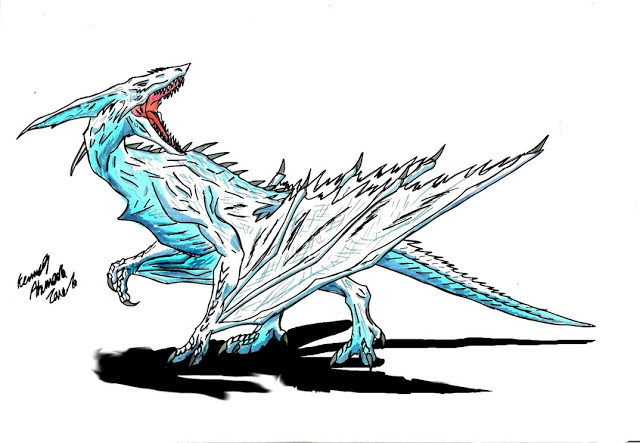

 RSS Feed
RSS Feed